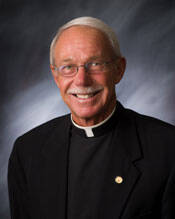It began as a quiet walk on a sunny Sunday. Then I got entwined in an ever-widening circle as the shrieks became more audible. There, emerging from a gunnysack, was a 12-foot-long Burmese python, nimbly guided by its handler, but coming right toward me! Its khaki green and granite pattern was in sharp contrast to the blazing red azaleas behind it. Only in Central Park!
I continued my walk to my favorite vista: a modest shard of a space with a lagoon in the foreground against a stand of maples, elms and oaks, with the towering skyline of the city that seemed to be reaching up to the cloud-dappled sky. I sat and reflected on the beauty of the place and the calming effect that nature has on me. I was suddenly back on my grandfather’s farm in Iowa.
A love of the outdoors has been a constant in my life. The summers and holidays spent on the family farm, my years as a boy scout and working my way through high school as a groundskeeper for a convent high above the Mississippi River all contributed to my kinship with nature. One day in my youthful adventures I saw a rattlesnake leaving my sleeping bag. I never camped there again. But the experience did prepare me for the python-sighting in Central Park.
As I reflect, I realize that many of my life-defining decisions were made in sylvan settings. The decision to join the Jesuits took place amid the vistas high above the Mississippi; to study theology in Europe was against the background of a sand pit in eastern Nebraska. And a Wisconsin lake-setting edged me to join the staff of America.
Wherever I travel I check out the landscape, the flora and fauna of the place, so to speak. When in art museums, fond as I am of 18th century portraiture, I first seek out landscapes—Fragonard, Bierstadt, Monet.
Occasionally I sit and review a mental Rolodex of my memories of natural phenomena: the density of a Brazilian rain forest, the majestic grandeur of the Iguazu Falls, the grace of a giraffe crossing the Serengeti, dusk descending on the Taj Mahal, a teal-colored sky threatening tornadoes, the teeming dullness of the Australian outback or the mesmerizing effect of miles of lush green Midwestern corn fields. I find great aesthetic value in creation. I often use these memories as background for my prayer and reflection. I find contemplation of nature’s magnificence imparts peace and serenity.
Sometimes, of course, one can go overboard. I remember returning in the early ’80s from a year in Australia. I had a wedding to bless in Minnesota, so I talked the groom into driving across western Iowa so I could be refreshed by the vibrant green fields. After two hours of corn, enough was enough, and a plane ticket looked pretty good.
Our very contact with nature has a deep, restorative power; contemplation of its magnificence imparts peace and beauty. The Bible speaks again and again of the goodness and beauty of creation, which is called to glorify God. The Book of Wisdom puts it this way: “For from the greatness and beauty of created things their author is seen.” Nature is full of genius and full of the divinity.
In the Spiritual Exercises, St. Ignatius said God “labors” in creation; sustaining the plants and animals and us by breathing life into them. He compares the sustaining love of God to rays of the sun, constant and life-giving. And he loved stars!
As for me, I can be walking along a seashore, pausing on a mountain trail or smelling the fragrance of an apple orchard, and see that nature mirrors the ongoing process of growth, survival and transformation in its life and ours.
Shakespeare said it well in “As You Like It”: “Our life finds tongues in trees, books in running brooks, sermons in stone and good in everything.”









For some nature can become a noose and the city is restorative!
It is amazing to read this piece and reminds me of the elaborate gift of being able to witness to so much beauty on so many different continents.
My call to action out of reading this piece is to appreciate every such opportunity I have and have had in my own life more deeply, and to work harder to help others to have access to the the same opportunities, knowing full well that there will always be people fenced in by circumstance who will never see the sun set on a different environment. Thanks for sharing!